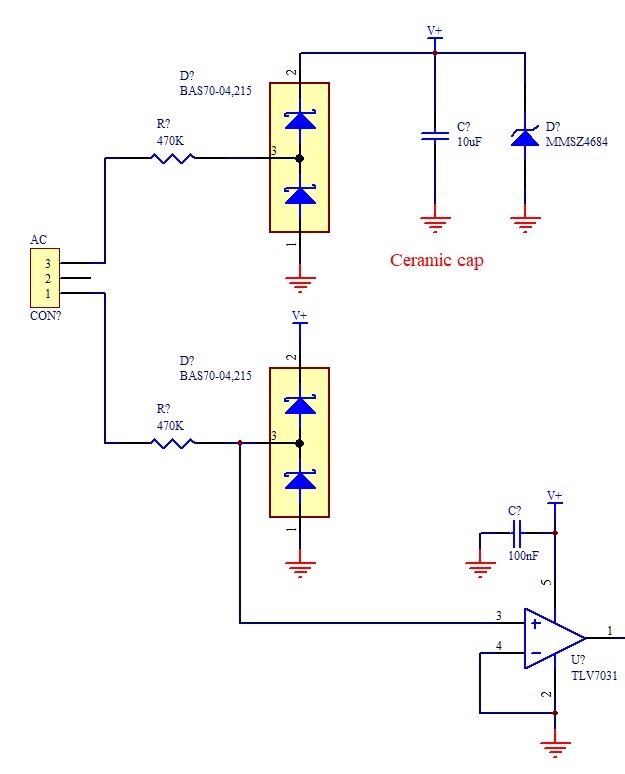Other Parts Discussed in Thread: TLV3491, TLV3201, TLV7011, LM393-N, TLV9031, TLV9032
Hi,
i built a 60 Hz zero crossing prototype circuit for 220 VAC mains power, but the output of TLV7031 comparator are not at 50% duty cycle.
I tested with TLV3491(i have this in my inventory) too and same problem.
I wanted to test with TLV7011 or maybe TLV3201, but TLV7011 i dont encounter($5 in some place) and texas instruments dont provide samples to Brazil anymore.
Input Positive cycle = 8,33 ms
Input Negative cycle = 8,33 ms
Output Positive cycle = 8,42 ms
Output Negative cycle = 8,26 ms
What may be the problem ?
offset ?
Internal hysteresis ? But TLV3491 does not have hysteresis, only TLV7031 !!!
propagation delay of only 3 µs ?
Is there a (simple) solution to get 50% duty cycle ??
Thank's.
Video:
Blue = positive comparator input(vi+), vi- is at ground
Yellow = comparator output






